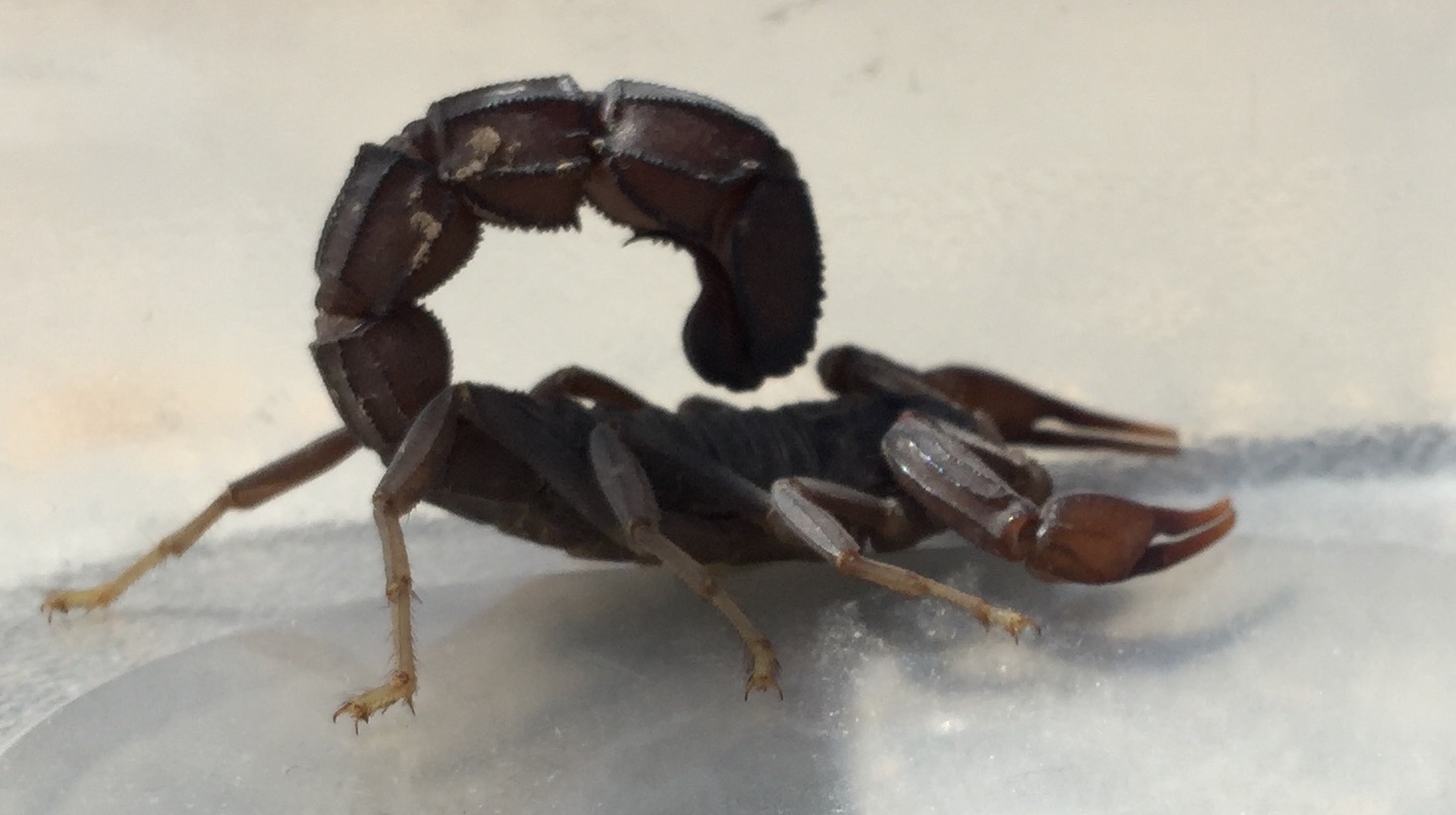|
Androctonus Bicolor
''Androctonus bicolor'', the black fat-tailed scorpion, is a scorpion species of the family Buthidae. It is black in color and can grow up to 8 cm. Black fat-tailed scorpions come from the family Buthidae, which is the largest of the scorpion family. They can be identified by their hefty physique. They tend to move very fast, and are of an aggressive nature. Black fat–tailed scorpions can live for up to 5 years. Adults can reach up to 40-60 millimeters, 80 millimeters being the maximum. These scorpions typically possess black and brown coloration. These scorpions enjoy making scrapes with wood and rocks, and are nocturnal, thus they hide in crevices or certain objects during the day. They stay in shade to retain moisture (that they obtain from prey) in their bodies, as they are susceptible to losing moisture due to their environmental preference. Location ''Androctonus'' is widespread in North and West Africa, the Middle East, but the wider family tolerates a wider range of ... [...More Info...] [...Related Items...] OR: [Wikipedia] [Google] [Baidu] |
Christian Gottfried Ehrenberg
Christian Gottfried Ehrenberg (19 April 1795 – 27 June 1876) was a German naturalist, zoologist, comparative anatomist, geologist, and microscopist. Ehrenberg was an evangelist and was considered to be of the most famous and productive scientists of his time. Early collections The son of a judge, Christian Gottfried Ehrenberg was born in Delitzsch, near Leipzig. He first studied theology at the University of Leipzig, then medicine and natural sciences in Berlin and became a friend of the famous explorer Alexander von Humboldt. In 1818, he completed his doctoral dissertation on fungi, ''Sylvae mycologicae Berolinenses.'' In 1820–1825, on a scientific expedition to the Middle East with his friend Wilhelm Hemprich, he collected thousands of specimens of plants and animals. He investigated parts of Egypt, the Libyan Desert, the Nile valley and the northern coasts of the Red Sea, where he made a special study of the corals. Subsequently, parts of Syria, Arabia and Abyss ... [...More Info...] [...Related Items...] OR: [Wikipedia] [Google] [Baidu] |
Scorpion
Scorpions are predatory arachnids of the order Scorpiones. They have eight legs, and are easily recognized by a pair of grasping pincers and a narrow, segmented tail, often carried in a characteristic forward curve over the back and always ending with a stinger. The evolutionary history of scorpions goes back 435 million years. They mainly live in deserts but have adapted to a wide range of environmental conditions, and can be found on all continents except Antarctica. There are over 2,500 described species, with 22 extant (living) families recognized to date. Their taxonomy is being revised to account for 21st-century genomic studies. Scorpions primarily prey on insects and other invertebrates, but some species hunt vertebrates. They use their pincers to restrain and kill prey, or to prevent their own predation. The venomous sting is used for offense and defense. During courtship, the male and female grasp each other's pincers and dance while he tries to move her onto his s ... [...More Info...] [...Related Items...] OR: [Wikipedia] [Google] [Baidu] |
Buthidae
The Buthidae are the largest family of scorpions, containing about 100 genera and 1339 species as of 2022. A few very large genera (''Ananteris'', ''Centruroides'', '' Compsobuthus'', or '' Tityus'') are known, but a high number of species-poor or monotypic ones also exist. New taxa are being described at a rate of several new species per year. They have a osmopolitandistribution throughout tropical and subtropical environments worldwide. Together with four other families, the Buthidae make up the superfamily Buthoidea. The family was established by Carl Ludwig Koch in 1837. Around 20 species of medically important (meaning potentially lethal to humans) scorpions are known, and all but one of these ('' Hemiscorpius lepturus'') are members of the Buthidae. In dead specimens, the spine beneath the stinger, characteristic for this family, can be observed. List of genera and number of species The following genera are recognised in the family Buthidae: * '' Aegaeobuthus'' Kovarik, ... [...More Info...] [...Related Items...] OR: [Wikipedia] [Google] [Baidu] |

